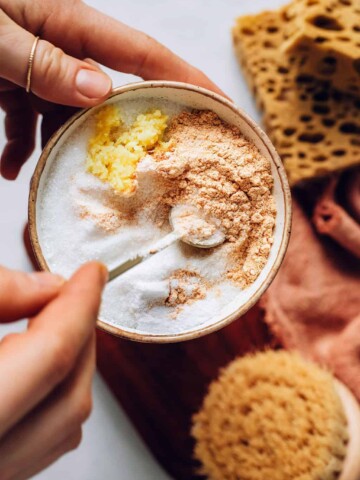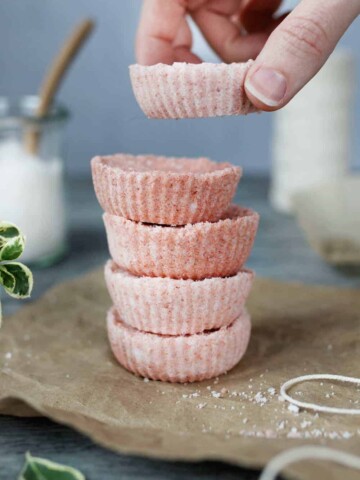A detox bath can do more than just relieve stress. It can also soothe sore muscles, help stop colds and infections, and open congested sinuses. As your pores open and blood is drawn to the skin, detox ingredients like Epsom salt can draw out toxins and deliver minerals like magnesium. As we enter cold and flu season, try these soothing detox bath recipes to get the most out of your me-time.
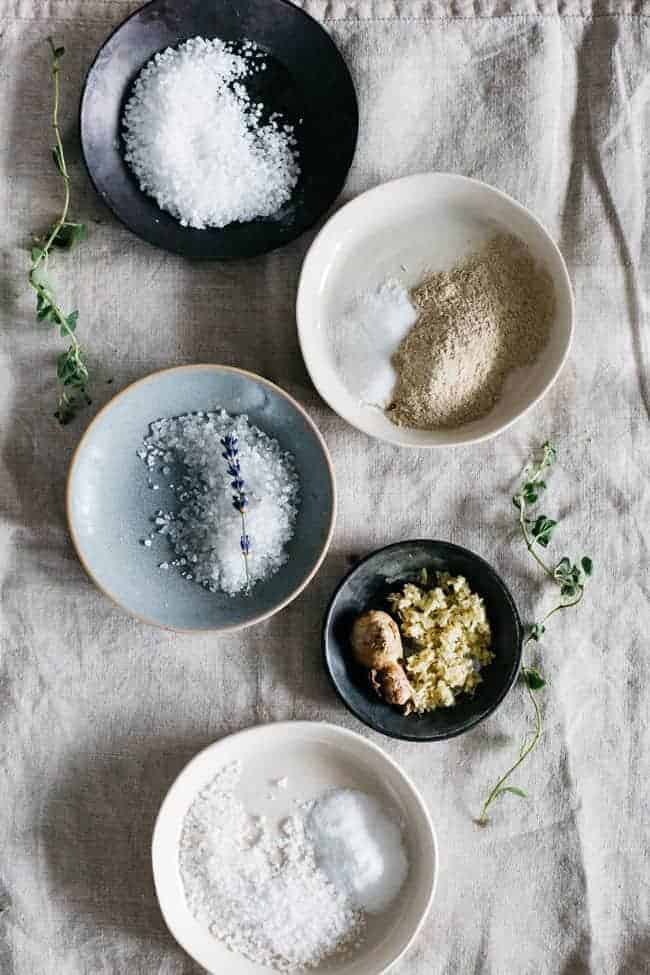
A healing bath soak eases tension, not only in your muscles but also internally, as your mind has a chance to slow down and be quiet for a bit. You can easily turn your leisurely bath into a homemade detox bath with a few basic ingredients.
If you're fighting off a cold or just want to remove toxins, add these detox bath ingredients for a soothing soak before bed. You'll sleep like a baby!
Jump to:
Detox Bath Ingredients
What to put in a detox bath largely depends on your specific goals and what benefits you're looking for. Different ingredients offer various properties that can contribute to the detoxification process. Here are some common detox bath ingredients and their potential benefits:
Epsom Salt—Epsom salt is known for its high magnesium content. Magnesium is important for muscle and nerve function, and it may help relax muscles, reduce stress, and promote relaxation. It can also potentially aid in detoxification by drawing out toxins through the skin.
Apple Cider Vinegar—Apple cider vinegar contains acetic acid, which is believed to help balance the body's pH levels. It may also have antimicrobial properties and could aid in removing toxins from the skin.
Baking Soda—Baking soda may help neutralize acids in the body and promote a balanced pH level. It can also assist in soothing skin irritation and potentially help draw out impurities through the skin.
Clay—Clay is known for its ability to bind to toxins and impurities on the skin's surface. It may help draw out excess oils, dirt, and pollutants, making it a popular choice for detox baths.
Seaweed (Kelp, Bladderwrack, etc.)—Seaweed is rich in minerals and trace elements that can be absorbed through the skin. It may provide nutrients to the body and potentially promote detoxification through mineral absorption.
Ginger—Ginger is thought to support circulation and sweating, which can aid in the elimination of toxins. It may also help soothe sore muscles and provide a warming sensation during the bath.
Essential Oils (Lavender, Eucalyptus, Tea Tree, etc.)—Essential oils can enhance the overall experience of a detox bath. They may provide relaxation, relieve stress, open airways, and offer aromatherapy benefits. Some essential oils also have antimicrobial properties.
Hydrogen Peroxide—Hydrogen peroxide can be used in small amounts to oxygenate the bathwater. This may help promote circulation, oxygenate cells, and potentially support detoxification.
Detox Bath Recipes
A bath detox can be a great way to relax, soothe sore muscles, and remove toxins from the body. You can create a recipe at home is by using a combination of natural ingredients, including baking soda, Epsom salt, essential oils, apple cider vinegar, and bentonite clay.
1. Epsom Salt + Coconut Oil Bath
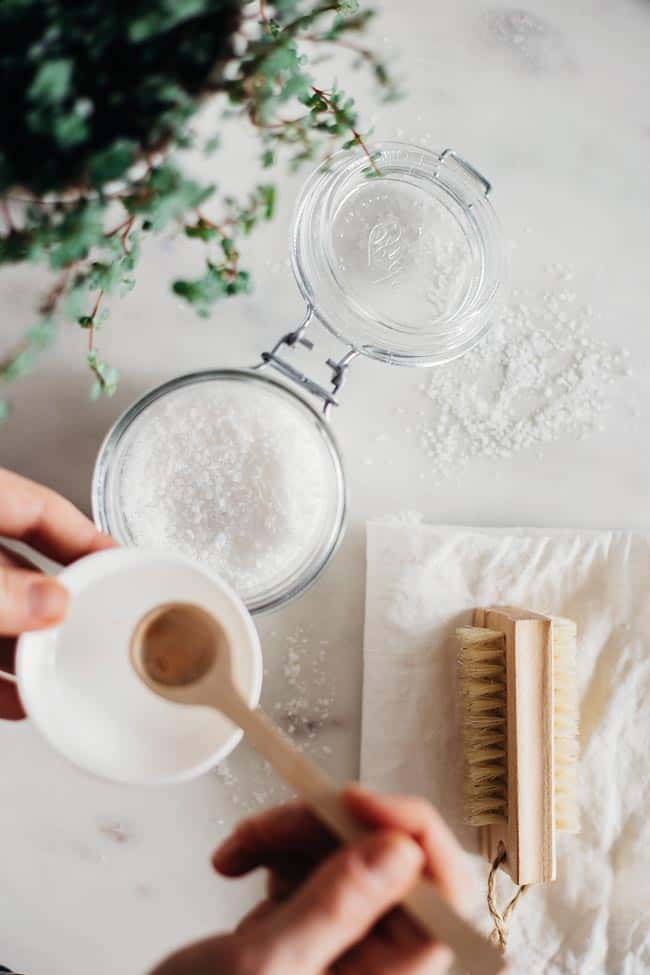
- 1–2 cups Epsom salt
- Large scoop coconut oil
Want to take the easiest no-fail homemade detox bath? Dump in a bunch of Epsom salt and soak for 60 minutes. Epsom salt delivers a dose of magnesium that has a number of benefits, including eliminating toxins, stimulating blood flow, and soothing sore muscles.
That was my go-to bath until I read how a few celebs (Phoebe Tonkin, Liv Tyler) added a few extras to their bath regimen. Now, when my skin is dry (which is pretty much all the time), I add a big scoop of coconut oil with about 2 cups of Epsom salt.
It’s like using a moisturizing body wash—the oil coats and hydrates your skin. This nicely counteracts the drying effect of soaking in hot water. You can apply more oil when you get out and go to bed all warm and oily.
2. Mustard + Baking Soda Bath
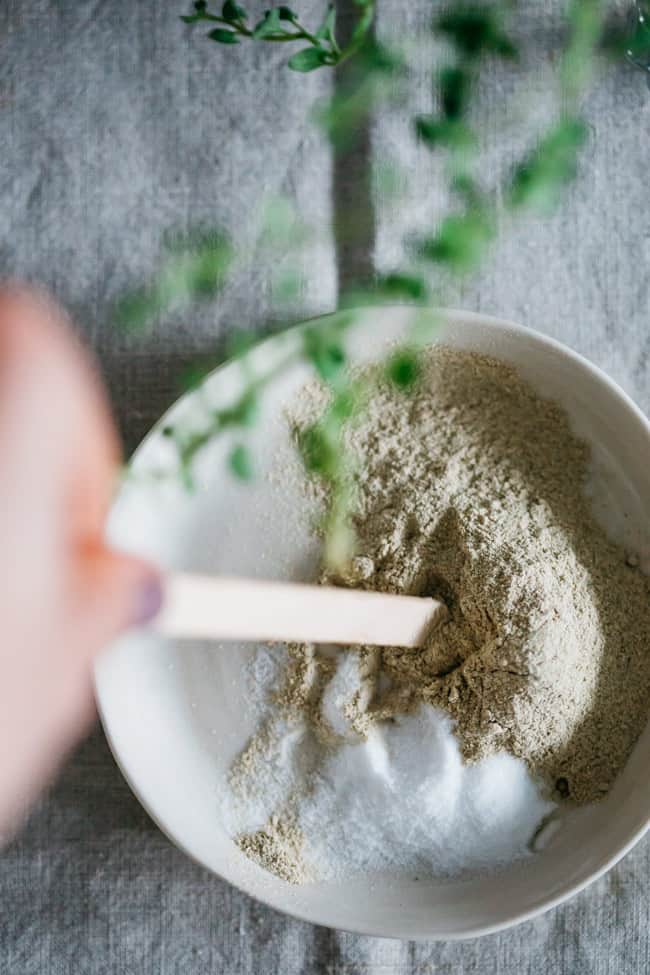
- ¼ cup mustard bath (I use Dr. Singha’s)
- 1 cup baking soda
This DIY detox bath is an anti-inflammatory treat for sore muscles and achy joints. While baking soda in a bath soothes dry, itchy skin, the mustard bath creates a warming “icy hot” effect with cooling essential oils like eucalyptus and thyme that help relax tight muscles and promote internal healing.
3. Apple Cider Vinegar Bath
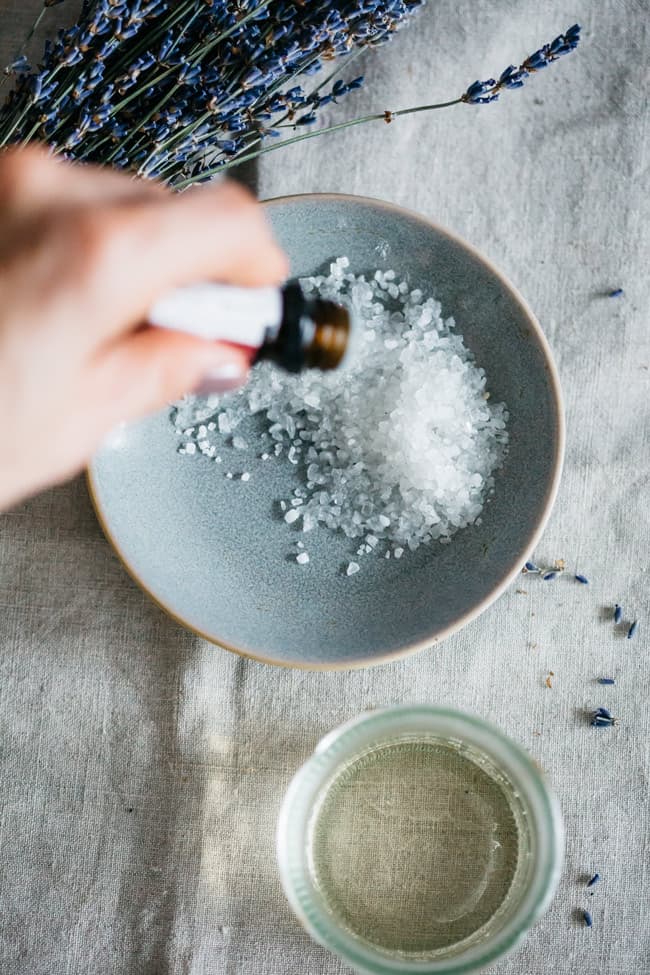
- 1 cup apple cider vinegar
- ½ cup Epsom salt
- 5 drops lavender essential oil
Create a homemade vaginal detox bath with antibacterial apple cider vinegar. Yes, a vinegar bath can help relieve skin or vaginal infections. The ACV has antibacterial effects [source] and cleans out pores—even in sensitive regions.
But if the vinegar ruins your bathtime sensory experience, add lavender oil to lend its antimicrobial properties [source] while counteracting the vinegar smell.
4. Ginger + Hydrogen Peroxide Bath
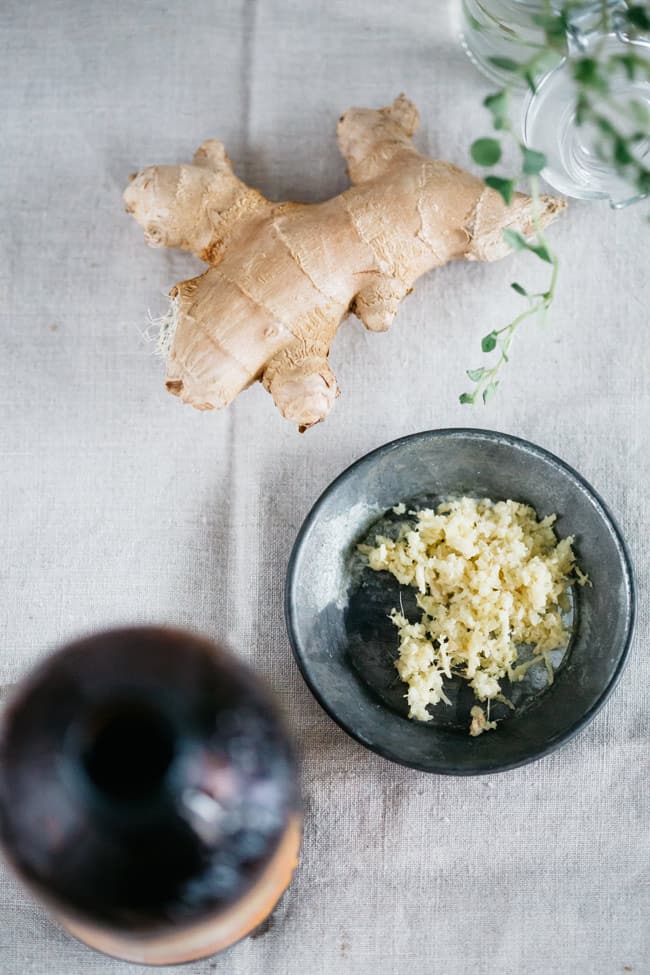
- 1 bottle hydrogen peroxide
- 1 tablespoon freshly grated ginger (or 2 teaspoons powdered ginger)
This is a great detox bath for colds—try it at the first sign of sickness! Hydrogen peroxide aids in detoxification, while the ginger helps bring on a good sweat to help cleanse the body and draw out toxins.
If you’re already feeling puny and congested, a hot soak can speed healing as the steam works to open the sinuses.
5. Sea Salt + Eucalyptus Bath
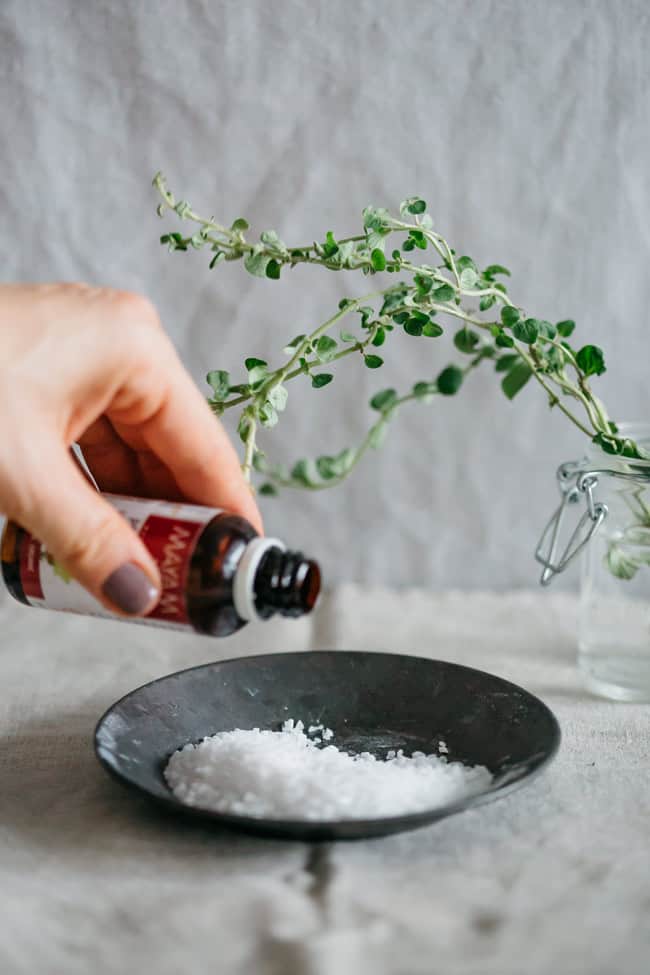
- 1 cup sea salt
- 1 cup Epsom salt
- 2 cups baking soda
- 10 drops eucalyptus essential oil
Combine all ingredients in a hot water bath and soak for as long as you can. The salts and baking soda draw out impurities and excess water while delivering a dose of natural minerals. The essential oil is stimulating, rejuvenating, and great for congestion.
6. Seaweed + Clay Bath

- 1 cup of bentonite clay
- Add a handful of dried seaweed (such as kelp or bladderwrack)
Bentonite clay helps detox your body from head to toe by drawing out impurities through the skin while seaweed baths are believed to provide essential minerals. Fill your bathtub with warm water and add the clay powder and dried seaweed.
Mix the clay into the water until well-distributed. Soak for 20-30 minutes. Try a clay hair mask or mud face mask while you soak.
7. Hydrotherapy Bath
- Cold bath
- Warm bath or shower
Ice baths are not for the faint of heart, but this hydrotherapy practice is an easier way to get the benefits of cleansing the skin, stimulating circulation and supporting detoxification. You'll simply alternate between hot and cold water (ice not required).
Start with a warm shower (or bath, if possible) for a few minutes, then switch to a cold bath for a shorter duration. You can also do the whole process in the shower if you like.
Repeat the cycle a few times, always ending with a cold bath. You'll definitely feel invigorated after this one!
How to Take a Detox Bath
There aren’t really any hard and fast rules when it comes to taking a detox bath soak. But here are a few tips to make sure you reap the benefits:
Fill the tub with hot water. It’s recommended that you use the hottest water you can comfortably stand because the warmer the water, the more you’ll sweat. And the more you sweat, the more you detox.
Add your bath soak. While the tub fills, add your bath soak ingredients and use your hands to help everything dissolve.
Purify the water. If your water is unfiltered, add a cup of baking soda or 2–3 tablespoons of bentonite clay to help absorb impurities like chlorine and fluoride in your water.
Relax for up to 40 minutes. Climb in and soak for anywhere between 20 and 40 minutes. If the water starts to get cold, drain the tub slightly and add more hot water. If you begin to feel lightheaded, splash your face with cool water or hop out of the tub so you can cool off.
Seal in moisture with body oil. When you’re done soaking, climb out (very carefully if you used oil in your bath), and pat skin dry. Slather on a natural moisturizer or body oil to soothe skin and lock in moisture.
Relax for the rest of the day. It’s best to do a detox bath on a Friday or Saturday night to allow yourself plenty of time to relax and recover post-soak.
FAQ
Detox baths can be a great way to relax, soothe sore muscles, and remove toxins from the body. One easy way to create a detox bath at home is by using a combination of natural ingredients, including baking soda, Epsom salt, essential oils, apple cider vinegar, and bentonite clay.
To make a homemade detox bath, start by running a warm bath, adding in a cup of Epsom salt, a cup of baking soda, and a half cup of bentonite clay. These ingredients can help soothe sore muscles, exfoliate the skin, and draw out toxins from the body.
Next, add a few drops of essential oils to the bath water to help create a relaxing atmosphere. Some good options include lavender oil, peppermint oil, or eucalyptus oil. These oils can also help promote relaxation and soothe any cold symptoms.
That’s really a personal preference. Since all of the ingredients in these bath soaks are gentle and chemical-free, you don’t have to. But if you feel grimy or greasy (or just plain sweaty), go ahead and take a quick shower to rinse off.
If at any point you start to feel sick during a bath (this can be common during an intensely hot soak), just drain the tub a bit and add more fresh cool water to bring the temperature down or soak in the tub for a shorter amount of time. You can always hop out of the tub and cool off before deciding if you want to get back in again.
I usually feel great after a detox bath! But everyone’s different.
You might feel tired, lightheaded, or dehydrated after your bath. Since you probably sweat a lot, I recommend drinking fluids before your bath and at least 16 ounces of water right after your bath to replenish whatever you lost. Then put on your comfiest PJs or loungewear, and go lie down for a bit. Give your body plenty of time to recalibrate before doing anything mentally or physically strenuous.
Start with just once a week. Because detox baths can make you feel tired or woozy afterward, especially when you’re not used to them, it’s best to start slowly and work your way up.
If you don’t notice any side effects, try introducing a second weekly bath to your routine.
You might notice a bit of residue following your bath, especially if you used oils or ingredients that don’t dissolve (I’m looking at you, ginger). Simply sprinkle a bit of baking soda in the tub and give it a good scrub. Then turn on the shower and rinse everything down the drain.
I recommend doing this every time you use oils in the bath so that you or your partner don’t get a slippery surprise next time you climb in the tub.
This post was medically reviewed by Dr. Rina Mary Allawh, M.D., a dermatologist who practices adult and pediatric medical dermatology, skin cancer treatment, and cosmetic dermatology. Learn more about Hello Glow’s medical reviewers here. As always, this is not personal medical advice, and we recommend that you talk with your doctor.
References
Yagnik D, et al. Antimicrobial activity of apple cider vinegar against Escherichia coli, Staphylococcus aureus and Candida albicans; downregulating cytokine and microbial protein expression. Sci Rep. 2018.
Garzoli S, et al. Liquid and vapour phase of lavandin (Lavandula × intermedia) essential oil: chemical composition and antimicrobial activity. Molecules. 2019.

